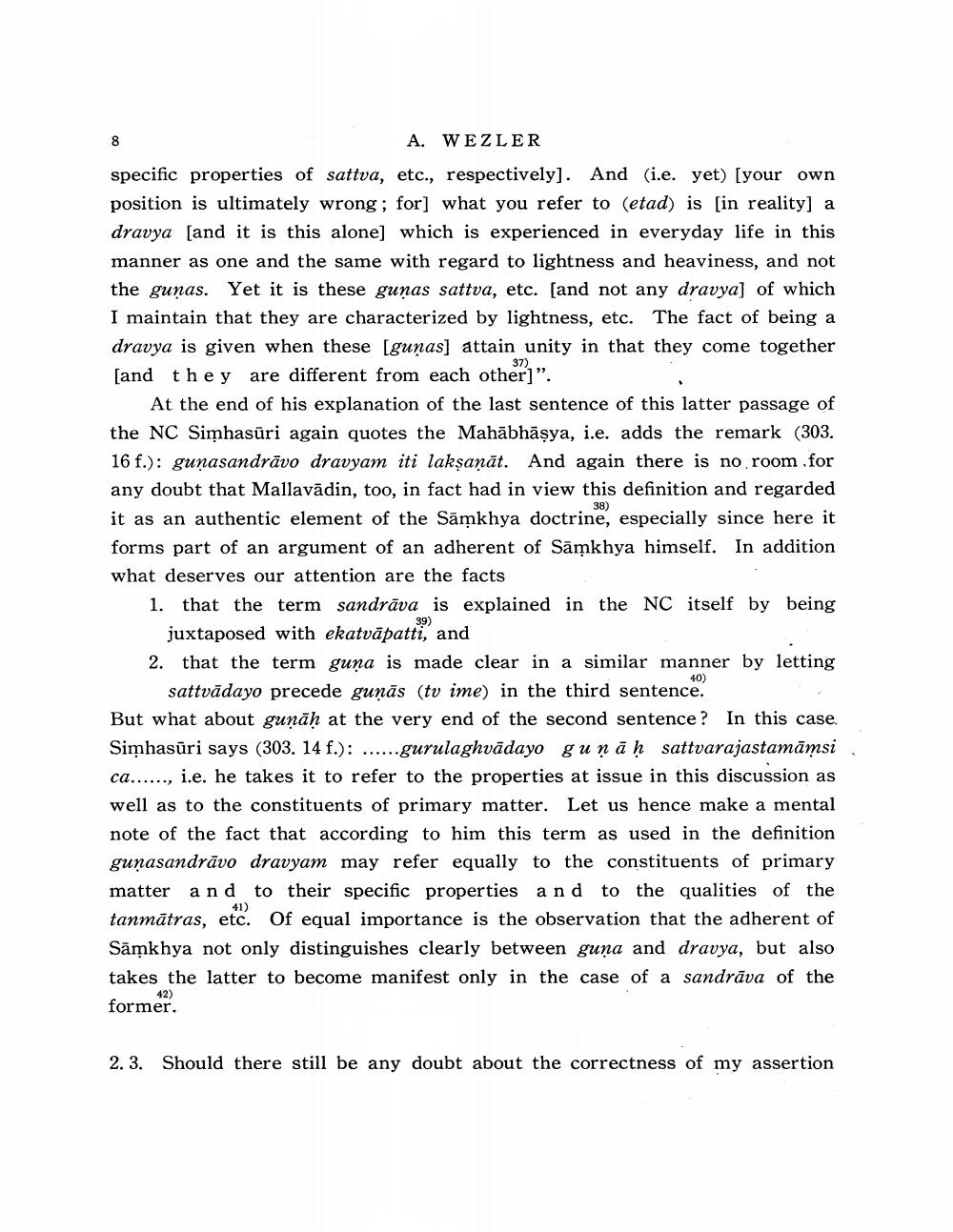Book Title: Note On Mahabhasya II 366 26 Gunasamdravo Dravyam Author(s): A Wezler Publisher: A Wezler View full book textPage 8
________________ A. WEZLER specific properties of sattva, etc., respectively]. And (i.e. yet) [your own position is ultimately wrong; for] what you refer to (etad) is [in reality] a dravya [and it is this alone) which is experienced in everyday life in this manner as one and the same with regard to lightness and heaviness, and not the guņas. Yet it is these gunas sattva, etc. [and not any dravya] of which I maintain that they are characterized by lightness, etc. The fact of being a dravya is given when these (gunas) attain unity in that they come together [and they are different from each other]”. At the end of his explanation of the last sentence of this latter passage of the NC Simhasūri again quotes the Mahābhāşya, i.e. adds the remark (303. 16 f.): gunasandrāvo dravyam iti laksaņāt. And again there is no room for any doubt that Mallavādin, too, in fact had in view this definition and regarded it as an authentic element of the Sāmkhya doctrine, especially since here it forms part of an argument of an adherent of Samkhya himself. In addition what deserves our attention are the facts 1. that the term sandrāva is explained in the NC itself by being juxtaposed with ekatvāpatti, and 2. that the term guna is made clear in a similar manner by letting sattvādayo precede gunās (tv ime) in the third sentence. But what about guņāḥ at the very end of the second sentence? In this case. Simhasūri says (303. 14 f.): ......gurulaghvādayo guņāḥ sattvarajastamāmsi ca......, i.e. he takes it to refer to the properties at issue in this discussion as well as to the constituents of primary matter. Let us hence make a mental note of the fact that according to him this term as used in the definition gunasandrāvo dravyam may refer equally to the constituents of primary matter and to their specific properties and to the qualities of the tanmātras, etc. Of equal importance is the observation that the adherent of Sāmkhya not only distinguishes clearly between guna and dravya, but also takes the latter to become manifest only in the case of a sandrāva of the former. 40) 41) 2.3. Should there still be any doubt about the correctness of my assertionPage Navigation
1 ... 6 7 8 9 10 11 12 13 14 15 16 17 18 19 20 21 22 23 24 25 26 27 28 29 30 31 32 33
